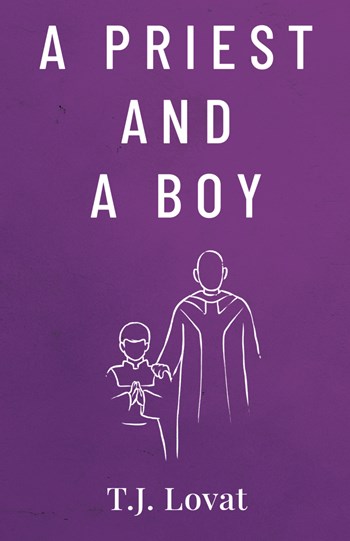Told in three chronologically-distinct sections, T.J. Lovat’s A PRIEST AND A BOY begins with Peter as a child in ‘50s Australia; Father Cassey is the affable young priest at his local parish. When Cassey perceives some of the domestic trouble brewing in Peter’s home, he embarks on a process of grooming and eventual abuse which harms the boy for years to come.
A PRIEST AND A BOY makes some stylistic choices that prevent the text from engaging the reader. It assumes little or no familiarity with Catholic rites on the part of the reader, and often errs on the side of over-explanation – its encyclopedic descriptions of specific feasts or liturgical practices generally reinforce the reader’s cognitive distance from the events in question. The text does much better in sections where Peter worries about his aptitude as an altar server, for instance; the particulars of the rites are less important than understanding how the characters feel about them, allowing the reader a clearer avenue for emotional connection to the characters and story. Unfortunately, the sense of distance is established early and is never really shaken by subsequent descriptions of characters’ interior lives.
The focus on those interiors lives shifts through the novel, to its detriment. Although the earlier episodes are dominated by Peter’s confusion about what’s happening to him and why, the text increasingly focuses on Father Cassey and his reflections on his desires and behavior (along with interactions between the priest and other, often apologetic, clergymen). By contrast, Peter’s later life – and the ongoing damage done by Cassey’s abuse – is told largely in summary, with almost as much time spent on Peter’s mother and her own relationship with the priest as on Peter himself. The result is frustrating at best and unsettling at worst: critical distance lends the survivor’s struggles a perfunctory tone, while the text lavishes attention on the abuser’s emotions during conversations over brandy and trips to Italy.
Ultimately, A PRIEST AND A BOY fails to surmount the challenge of writing meaningfully about acts of immense depravity. Recent public discussions of Holocaust literature like Art Spiegelman’s Maus, for instance, have elucidated this challenge: it is not always possible, or indeed desirable, to do anything other than to recount the horrors which some people perpetrate against others. But privileging the perspectives of abusers over those of survivors is different from trying to understand why abusers do what they do, and in any case, A PRIEST AND A BOY never answers that question satisfactorily anyway. The result is a series of unpleasant moments – some rendered fairly effectively – which never coalesce into a meaningful whole.
While the writing is sound and the setting provides texture and depth, A PRIEST AND A BOY fails to create an emotional arc equal to the enormity of the crimes it depicts.
~Dan Accardi for IndieReader

